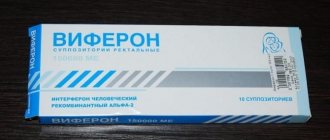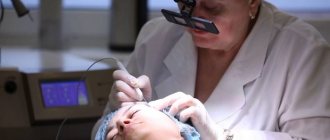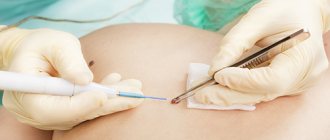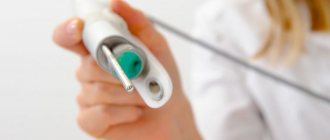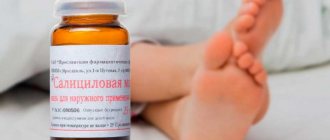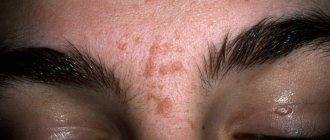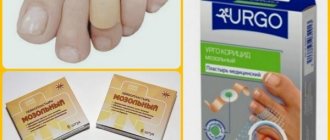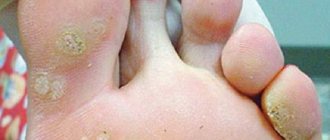Warts are a special type of skin growth. Externally, they appear as dense, round or oblong nodules, flesh-colored. The main cause of warts (except for senile tumors) is human papillomavirus infection (HPV). The virus is transmitted through direct contact, as well as through objects used by an infected person.
Factors that contribute to the formation of warts include:
- frequent stress, psycho-emotional stress;
- weakened immunity;
- wearing tight shoes;
- frequent change of sexual partners;
- excessive sweating of the hands and feet.
Despite the fact that warts are classified as benign neoplasms, they are recommended to be removed immediately after they appear.
Ways to remove warts
Today, there are several main ways to remove warts:
- laser;
- chemical, using pharmaceutical preparations;
- liquid nitrogen;
- surgical;
- folk remedies;
Laser wart removal uses the latest equipment and is the most modern and most effective method. It is enough to carry out 1-2 procedures for the warts to disappear completely.
This is the most painless removal procedure, and there are practically no scars left from warts, see photos before and after laser wart removal.
What are the features of the method?
Surgical intervention may be advisable if the neoplasm is large, as well as for deep and flat papillomas.
Only with the help of surgical destruction can one get rid of malignant growths. Regarding the disadvantages of surgical removal of warts, these are the remaining scars and scars.
But nowadays there are ways to get rid of such aesthetic flaws. For example, they use silicone patches that are glued to the scar and after 15–20 days it dissolves and leaves no trace.
Causes of warts
Warts are a viral disease, from which it follows that the main cause may be a simple failure to comply with hygiene rules, given that the papilloma virus is very quickly inoculated through direct contact with a person carrying the virus, through shared objects, especially through small wounds on the skin. The impact of the virus increases when the body’s immunity is weakened.
Can warts cause complications?
Warts usually do not cause complications unless they grow, become painful when walking, and cause psychological discomfort for aesthetic reasons. In rare cases, injuries can spread to adjacent areas.
Patients with a significant defect in the immune system (for example, immunodeficiency of various origins) retain the theoretical possibility of malignant formation of a simple wart, although this does not occur in everyday practice. This is in contrast to genital warts, which can also be caused by oncogenic types of human papillomavirus (HPV). Thus, to avoid the complications listed above, radical removal of warts is recommended in all cases.
Places where you can get infected
As a rule, these are public places with high humidity, such as saunas, gyms, showers, swimming pools and beaches, sun loungers, etc., so in such places you need to use personal hygiene products especially carefully.
If you get even a small wound on your skin, you should immediately wash it with soap. Be careful when cutting meat.
Types
Some common types of warts that can develop on the face include flat warts and filiform warts.
Flat wart
Flat warts appear around scratches or cuts in the skin. They are especially common in areas that people shave, such as the face and legs. Flat warts are skin-colored, have a smooth, flat top, and range in size from 1 to 7 millimeters.
Filiform warts
Filiform warts have a spiky or thread-like appearance. These fast-growing warts usually appear near the mouth, eyes, and nose.
When to remove warts
Warts come in different types: vulgar (common), flat, plantar, filiform. Depending on the degree of damage to skin areas, a method is selected for their removal/removal.
If single warts form, it is not necessary to immediately try to remove them. With a fairly healthy body and a good immune system, warts can go away on their own
However, if the process is clearly prolonged and has characteristic changes, such as an increase in size, a change in shape and color, the appearance of new formations, itching, you need to consult a specialist.
You can’t leave warts on for a long time, because... any benign formations, including warts, can change into malignant ones.
How to get rid of warts on the face?
You can treat warts at home. However, it is best to talk to your doctor before trying to get rid of a wart on your face. Doctors can make recommendations for safe and successful treatment of warts.
Often, warts go away on their own, without medication. This occurs when the body's immune system successfully fights the infection that caused the wart. However, it may take more than a year for the wart to completely disappear. Some people don't want to wait long for a facial wart to disappear naturally. They may try to remove the wart instead.
Salicylic acid
is a popular option for wart removal. However, experts generally do not recommend using it on the face.
Some studies suggest that topical vitamin A may be an effective alternative. According to one of the authors of the article, tretinoin, a derivative of vitamin A, may help treat flat warts. Additionally, in 2012, researchers reported a case where a man successfully treated his warts with vitamin A extracted from fish oil. He applied the oil directly to the warts.
Features of laser wart removal
The procedure for removing warts using a laser itself is not complicated and does not take much time. In view of this, such operations are often carried out in a regular cosmetology office and take 5-10 minutes, while the removal process itself is completely painless. If the skin lesions are extensive, you may be given local anesthesia.
Laser removal of warts is a mini-operation, which is carried out frequently and everywhere, at a high level by specially trained specialists, as evidenced by a large list of good reviews from patients.
After the operation, the wart heals quickly, usually within two weeks; during this time it is best to refrain from visiting places of active recreation, exposure to direct sunlight, or visiting a solarium.
Operation stages
Surgical removal of warts is carried out according to the following scheme:
- Using an antiseptic to treat the tissue around the wart.
- A local anesthetic is injected for pain relief.
- Excision of the growth is carried out, if necessary, capturing healthy tissue. The resulting material is sent for histological examination in order to exclude a malignant process in the wart.
- A tight bandage is then applied to stop the bleeding.
- Then a suture or a silicone patch with a absorbable effect is applied. If a cosmetic suture was applied, it is left for 7–10 days, but the patch lasts up to 14–21 days.
Contraindications for laser wart removal
In general, this method is generally available to people of all ages; there are no contraindications for laser removal for children.
However, there are some restrictions of a purely individual nature, these include:
- pregnancy and breastfeeding;
- diabetes;
- if you have been sunbathing or immediately after solarium;
- have cancer;
- high blood pressure;
- bad cold;
Contraindications for the procedure
The advantage of surgical removal of warts is that there are practically no absolute contraindications, there are only relative ones, in which, after eliminating the problem, surgery can be performed.
Contraindications include:
- The presence of acute inflammation or infection, after treatment and removal of these manifestations, you can begin surgical excision of the formation.
- Herpesvirus disease in the acute stage.
- The period of pregnancy and lactation in women.
- During exacerbation of a chronic disease.
Self-removal of warts is strictly contraindicated.
Reference. In order for the process of removing warts to go without consequences, it is imperative to undergo a complete diagnosis of the body before doing so, first of all, to determine whether there are any contraindications to surgical intervention.
Other infectious diseases
To answer the frequently asked question, what could be the consequences of removing a wart with a laser, we can say with confidence that this is an almost completely safe method that does not entail any negative consequences, and also leaves virtually no scars from a cosmetology perspective.
However, what to do if a wound appears after laser removal of a wart. Firstly, the appearance of a wound can be caused by deep damage to the skin by a wart, when its roots have gone deep under the skin and the treatment was most intensive.
In this case, it is important to maintain maximum sterility, try not to wet the wound as much as possible, do not use various ointments, do not “dry” it with iodine, avoid sunlight, and do not touch it with your hands. Use only light disinfectants.
Warts on the face - treatment
If home treatment does not help, you should consult a doctor. He may recommend one of the following treatment options:
Cryotherapy
Cryotherapy treatment involves spraying liquid nitrogen onto the wart. Liquid nitrogen freezes and destroys infected skin cells, causing the wart to fall off. However, this treatment may leave dark or light spots on the skin. People with very light or very dark skin types should avoid using this method, especially on the face.
Cantharidin
A dermatologist may coat the wart with a substance called cantharidin
. Wash off the cantharidin after 3-4 hours, or if blisters appear or pain occurs. Dermatologists generally do not use cantharidin on warts located on the face due to the risk of blistering.
Surgical removal
Your doctor may cut or scrape off the wart, especially a filiform wart. However, this method is best not used on the face. In other cases, the doctor may cut the surface of the wart to allow liquid nitrogen to penetrate into the core of the wart.
Immunotherapy
Your doctor may recommend immunotherapy to kill the wart. It involves a series of injections of candida antigen into the wart. This can boost your immunity and the wart will disappear. Doctors usually give immunotherapy treatment to people with warts that don't respond to other treatment options.
Benefits of laser wart removal
In addition to the fact that this method is the most effective and painless, it allows you to remove warts in hard-to-reach and intimate places. For thread-like formations in sensitive places, for example on the eyelid, on the inside of the mouth, etc.
This method is especially effective when growths form in the heel of the foot, when the wart grows deep inside, so that very noticeable pain occurs when walking.
In addition, laser therapy is widely used by medicine to remove a wide variety of neoplasms, such as unsightly moles, papillomas, and other unwanted skin formations of a non-oncological nature.
What are the most common warts?
Most often (up to 70% of all cases), patients report warts that bother them, and the majority of patients are school-age children. Warts are also found in 20% of students. Plantar warts are more common in adults (34% of cases), as opposed to flat warts, which are again more common in children (4% of all warts).
An experienced dermatologist can easily determine the type of wart during a consultation. However, in rare cases, especially if the wart is injured, it is difficult to diagnose it only by examination, and then the doctor can perform a biopsy of the derivative and histological examination.
Photo of laser wart removal
We also recommend:
